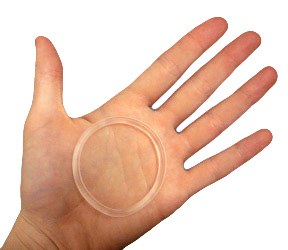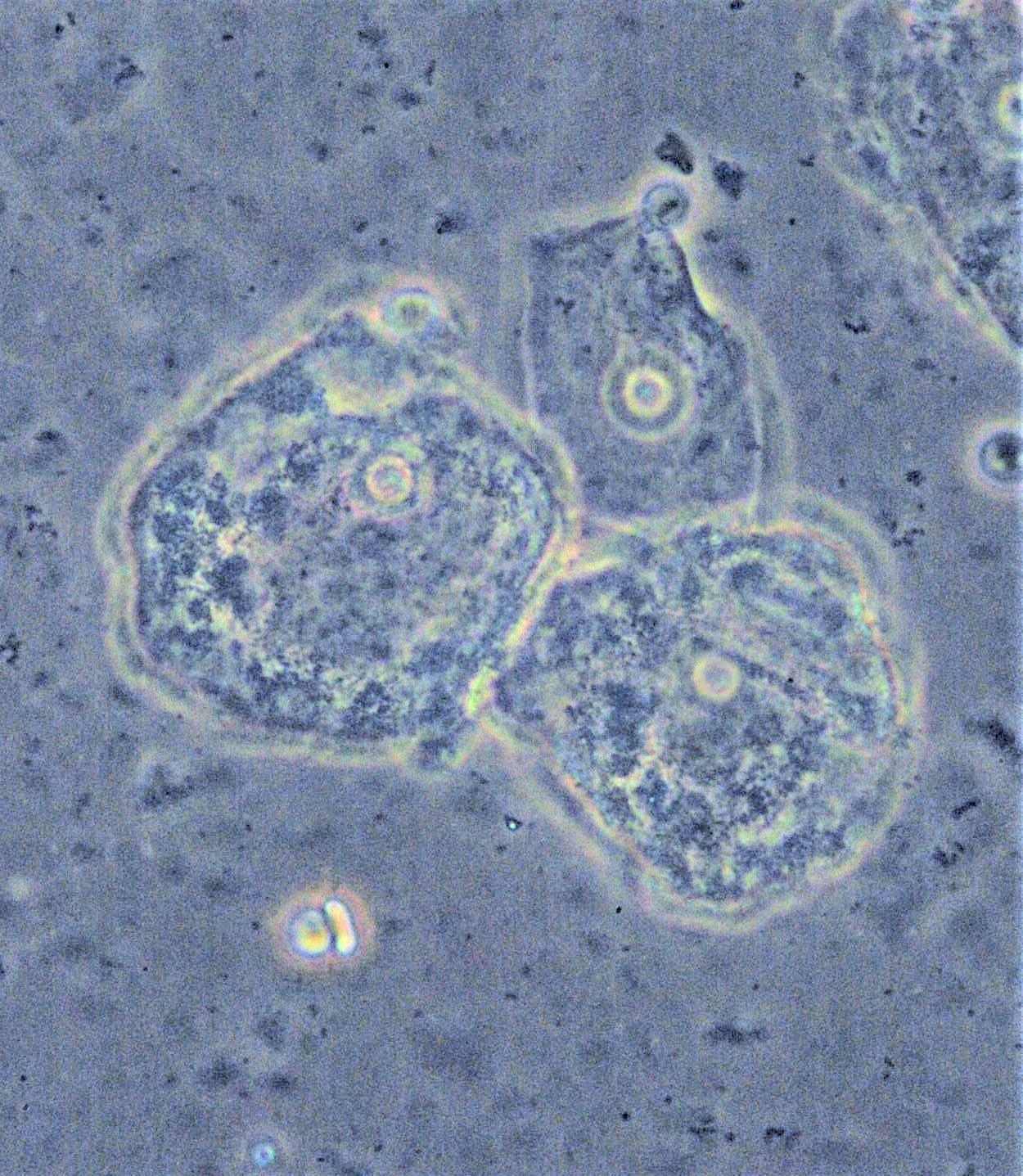|
Intravaginal
Intravaginal administration is a route of administration where the substance is applied inside the vagina. Pharmacologically, it has the potential advantage to result in effects primarily in the vagina or nearby structures (such as the vaginal portion of cervix) with limited systemic adverse effects compared to other routes of administration. Formulation methods include vaginal tablets, vaginal cream, vaginal gel, vaginal suppository and vaginal ring. Medicines primarily delivered by intravaginal administration include vaginally administered estrogens and progestogens (a group of hormones including progesterone), and antibacterials and antifungals to treat bacterial vaginosis and yeast infections respectively. Medicines may also be administered intravaginally as an alternative to oral route Oral administration is a route of administration where a substance is taken through the mouth. Per os abbreviated to P.O. is sometimes used as a direction for medication to be ... [...More Info...] [...Related Items...] OR: [Wikipedia] [Google] [Baidu] |
Vaginal Ring
Vaginal rings (also known as intravaginal rings, or V-Rings) are polymeric drug delivery devices designed to provide controlled release of drugs for intravaginal administration over extended periods of time. The ring is inserted into the vagina and provides contraception protection. Vaginal rings come in one size that fits most women. Types Several vaginal ring products are currently available, including: *Vaginal rings as treatment of peri-menopausal symptoms: **''Estring'' - a low-dose estradiol-releasing ring, manufactured from silicone elastomer, for the treatment of vaginal atrophy (atrophic vaginitis). **''Femring'' - a low-dose estradiol-acetate releasing ring, manufactured from silicone elastomer, for the relief of hot flashes and vaginal atrophy associated with menopause. *Vaginal rings as contraception: **''NuvaRing'' - a low-dose contraceptive vaginal ring, manufactured from poly(ethylene-co-vinyl acetate), and releasing etonogestrel (a progestin) and ethinylestradio ... [...More Info...] [...Related Items...] OR: [Wikipedia] [Google] [Baidu] |
Progesterone
Progesterone (P4) is an endogenous steroid and progestogen sex hormone involved in the menstrual cycle, pregnancy, and embryogenesis of humans and other species. It belongs to a group of steroid hormones called the progestogens and is the major progestogen in the body. Progesterone has a variety of important functions in the body. It is also a crucial metabolic intermediate in the production of other endogenous steroids, including the sex hormones and the corticosteroids, and plays an important role in brain function as a neurosteroid. In addition to its role as a natural hormone, progesterone is also used as a medication, such as in combination with estrogen for contraception, to reduce the risk of uterine or cervical cancer, in hormone replacement therapy, and in feminizing hormone therapy. It was first prescribed in 1934. Biological activity Progesterone is the most important progestogen in the body. As a potent agonist of the nuclear progesterone receptor (nPR) ... [...More Info...] [...Related Items...] OR: [Wikipedia] [Google] [Baidu] |
Tablet (pharmacy)
A tablet (also known as a pill) is a pharmaceutical oral dosage form (''oral solid dosage'', or OSD) or solid unit dosage form. Tablets may be defined as the solid unit dosage form of medicament or medicaments with suitable excipients. It comprises a mixture of active substances and excipients, usually in powder form, pressed or compacted from a powder into a solid dose. Tablets are prepared either by molding or by compression. The excipients can include diluents, binders or granulating agents, glidants (flow aids) and lubricants to ensure efficient tabletting; disintegrants to promote tablet break-up in the digestive tract; sweeteners or flavours to enhance taste; and pigments to make the tablets visually attractive or aid in visual identification of an unknown tablet. A polymer coating is often applied to make the tablet smoother and easier to swallow, to control the release rate of the active ingredient, to make it more resistant to the environment (extending its shelf li ... [...More Info...] [...Related Items...] OR: [Wikipedia] [Google] [Baidu] |
Vaginal Yeast Infection
Vaginal yeast infection, also known as candidal vulvovaginitis and vaginal thrush, is excessive growth of yeast in the vagina that results in irritation. The most common symptom is vaginal itching, which may be severe. Other symptoms include burning with urination, a thick, white vaginal discharge that typically does not smell bad, pain during sex, and redness around the vagina. Symptoms often worsen just before a woman's period. Vaginal yeast infections are due to excessive growth of '' Candida''. These yeast are normally present in the vagina in small numbers. Vaginal yeast infections are typically caused by the yeast species ''Candida albicans''. ''Candida albicans'' is a common fungus often harbored in the mouth, digestive tract, or vagina without causing adverse symptoms. The causes of excessive ''Candida'' growth are not well understood, but some predisposing factors have been identified. It is not classified as a sexually transmitted infection; however, it may occur more o ... [...More Info...] [...Related Items...] OR: [Wikipedia] [Google] [Baidu] |
Bacterial Vaginosis
Bacterial vaginosis (BV) is a disease of the vagina caused by excessive growth of bacteria. Common symptoms include increased vaginal discharge that often smells like fish. The discharge is usually white or gray in color. Burning with urination may occur. Itching is uncommon. Occasionally, there may be no symptoms. Having BV approximately doubles the risk of infection by a number of sexually transmitted infections, including HIV/AIDS. It also increases the risk of early delivery among pregnant women. BV is caused by an imbalance of the naturally occurring bacteria in the vagina. There is a change in the most common type of bacteria and a hundred to thousand fold increase in total numbers of bacteria present. Typically, bacteria other than ''Lactobacilli'' become more common. Risk factors include douching, new or multiple sex partners, antibiotics, and using an intrauterine device, among others. However, it is not considered a sexually transmitted infection and, unlike gonorrh ... [...More Info...] [...Related Items...] OR: [Wikipedia] [Google] [Baidu] |
Vaginally Administered Estrogens
Vaginal estrogen is a form of estrogen that is delivered by intravaginal administration. Vaginally administered estrogens are thereby exerting their effects mainly in the nearby tissue, with more limited systemic effects compared to orally administered estrogens.Estrogen (Vaginal Route) from Mayo Clinic / Thomson Healthcare Inc. Portions of this document last updated: Nov. 1, 2011 It will not protect against osteoporosis. With perhaps the exception of the Femring, it also will not alleviate the es and hormonal imbalance caused by menopause. [...More Info...] [...Related Items...] OR: [Wikipedia] [Google] [Baidu] |
Artificial Insemination
Artificial insemination is the deliberate introduction of sperm into a female's cervix or uterine cavity for the purpose of achieving a pregnancy through in vivo fertilization by means other than sexual intercourse. It is a fertility treatment for humans, and is common practice in animal breeding, including dairy cattle (see Frozen bovine semen) and pigs. Artificial insemination may employ assisted reproductive technology, sperm donation and animal husbandry techniques. Artificial insemination techniques available include intracervical insemination (ICI) and intrauterine insemination (IUI). Humans History The first recorded case of artificial insemination was John Hunter in 1790, who helped impregnate a linen draper's wife. The first reported case of artificial insemination by donor occurred in 1884: William H. Pancoast, a professor in Philadelphia, took sperm from his "best looking" student to inseminate an anesthetized woman without her knowledge. The case was reporte ... [...More Info...] [...Related Items...] OR: [Wikipedia] [Google] [Baidu] |





